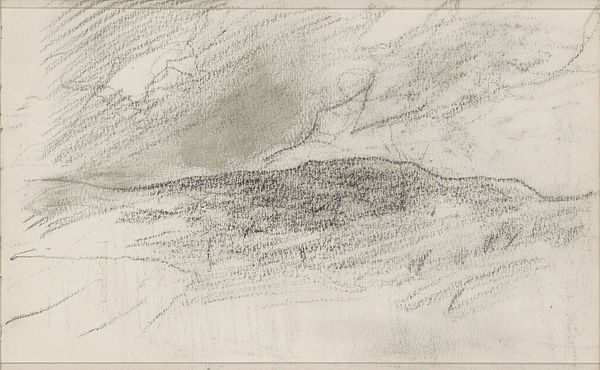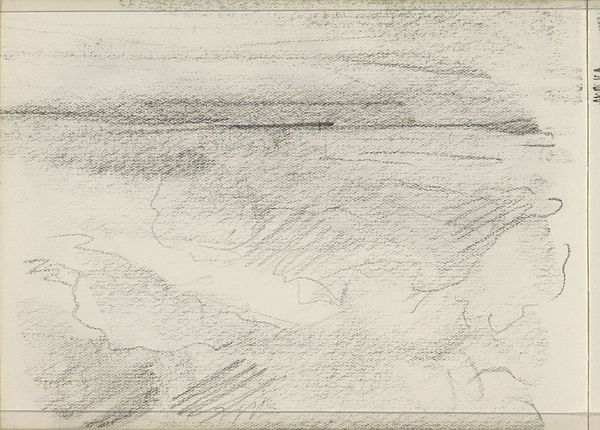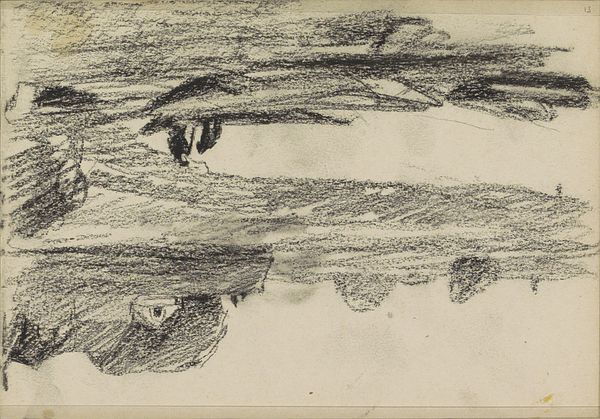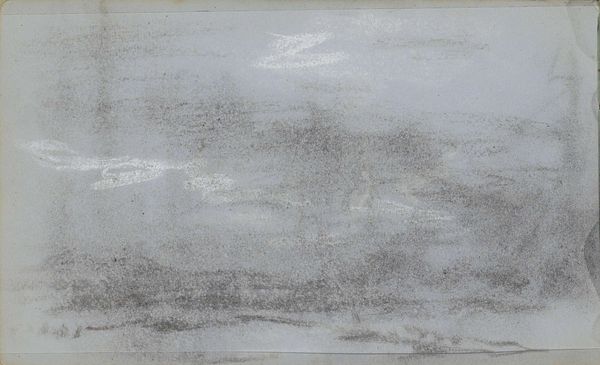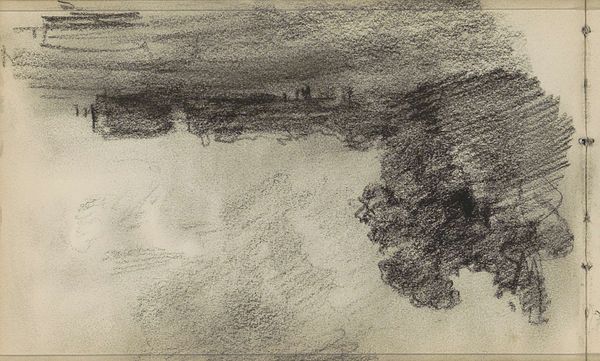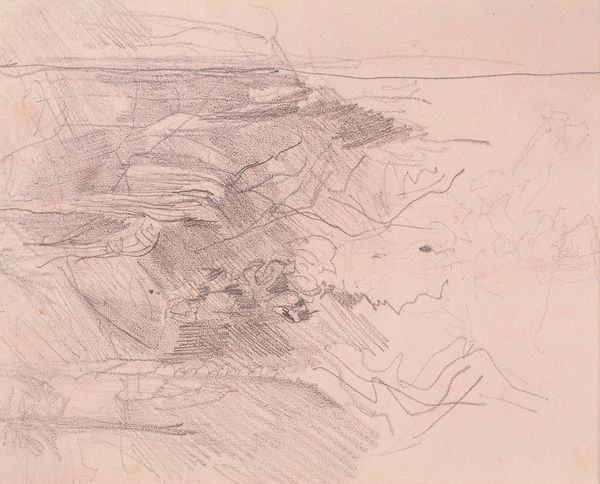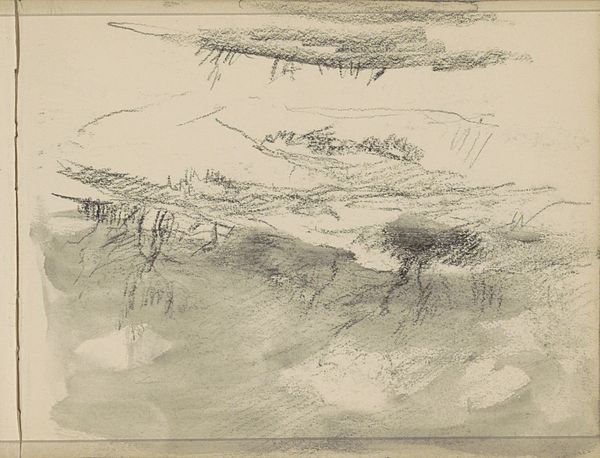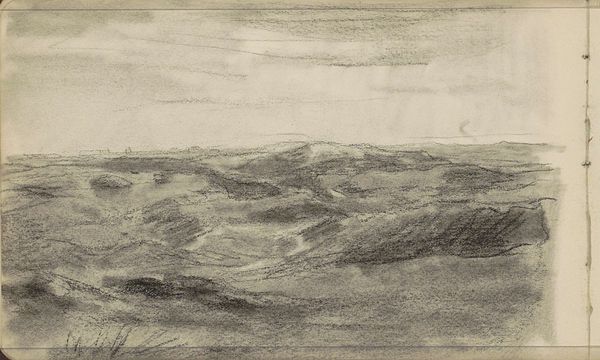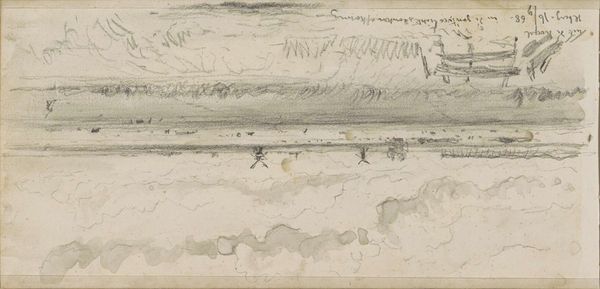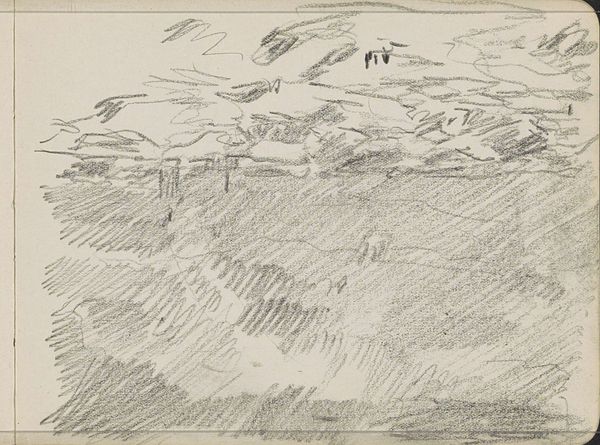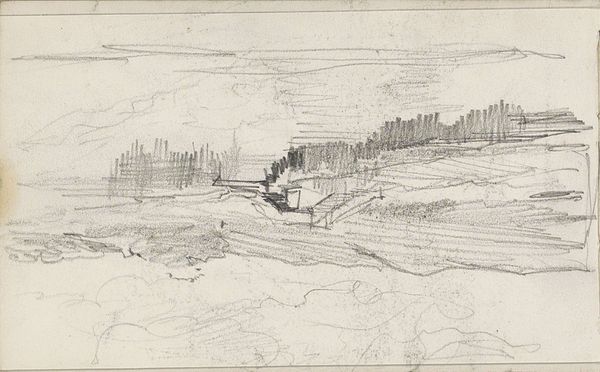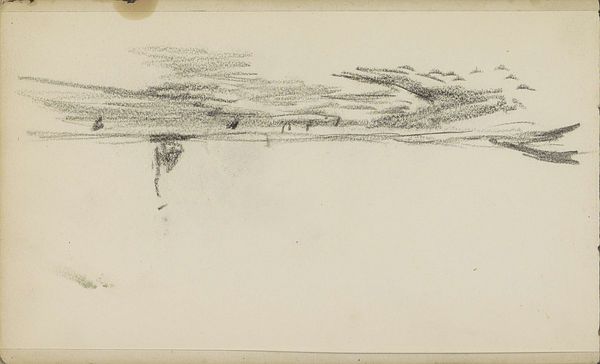
Copyright: Rijks Museum: Open Domain
Editor: Here we have "Kustgezicht," a coastal scene rendered in pencil by Johan Antonie de Jonge, circa 1920. There’s something very immediate and dreamlike about it – a sketch capturing a fleeting moment. What do you see in this piece? Curator: Well, instantly, I’m drawn to how De Jonge uses the pencil, not just for depiction, but as a kind of visual language. Consider the horizon line, barely there, a whispered boundary between earth and sky. It makes me think of memory, how landscapes are stored within us, less as precise pictures, and more as emotional residue. Do you feel a sense of place, or is it more about feeling displaced? Editor: I think I feel both. The sketchy nature suggests it could be anywhere, but those vertical marks…are those docks or ships perhaps? There's something vaguely industrial. Curator: Exactly! Those "marks" trigger cultural memory. Harbors represent departures, arrivals, a nexus of hope and anxiety. They evoke centuries of trade, migration, and yes, industrial expansion. It’s interesting how a few simple strokes can carry such weighty cultural baggage, isn’t it? Do you notice how the heavy shading is above the thin horizon? How does that weighting influence your reading of this scene? Editor: That pushes the eye down, emphasizing the foreground…making it feel almost like we're standing in the water looking out at a fleeting industrial opportunity. I see that visual language, that almost unconscious collective memory coming together now. Curator: Precisely. And that is exactly the point: how visual cues can trigger very complex and compelling cultural interpretations. What an evocative little drawing. Editor: I see so much more in it now, definitely an evocative landscape with much deeper layers.
Comments
No comments
Be the first to comment and join the conversation on the ultimate creative platform.
